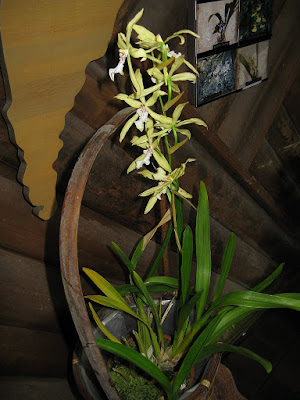Miltonia flavescens is native to Brazil, Paraguay, Argentina and Peru. This very widespread species is found along the east coast of Brazil, from the state of Pernambuco and south through the states of Bahia...
Miltonia flavescens also called as The Yellowish Miltonnia, Cyrtochilum flavescens, Cyrtochilum stellatum, Irenea flavescens, Miltonia flavescens var. grandiflora, Miltonia flavescens var. stellate, Miltonia flavescens var. typical, Miltonia loddigesii, Miltonia stellate, Oncidium flavescens, Oncidium stellatum, is a species of the genus Miltonia. This species was described by John Lindley in 1841.
IDENTIFY MILTONIA FLAVESCENS
Miltonia flavescens is native to Brazil, Paraguay, Argentina and Peru. This very widespread species is found along the east coast of Brazil, from the state of Pernambuco and south through the states of Bahia, Espirito Santo, Minas Gerais, Rio de Janeiro, Sao Paulo, Parana, Santa Catarina and Rio Grande do Sul. In the state of Espirito Santo, these plants were found near Cachoeiro to Itepemirim at an altitude of around 800 m.
It is a medium sized, cool to warm growing epiphyte, which reaching 41-43 cm in size, with ovate-oblong, compressed, 5-13 cm long pseudobulbs enveloped basally by 1 or 2 leaf-bearing sheaths and carrying 2 apical, linear-ligulate, subacute or acute, usually 30 cm long leaves.
The Yellowish Miltonnia blooms in the spring through summer on a racemose, axillary from the base of the pseudobulb, erect or arching, to 35 cm long, 7 to 10, fragrant flowered inflorescence that is longer than the leaves and subtended by brown, membraneous sheaths and distichous, linear, acuminate floral bracts. The flowers in the shape of stars are about 7.5 cm in diameter. The wide spread petals of both whorls are pale yellow, long, narrow and have sharp tips. The relatively narrow-oval lip is white and has 4-6 reddish-purple stripes on its minimally hairy half, is about 2.5 cm long and has curled edges.
MILTONIA FLAVESCENS CARE AND CULTURE
Cultural information should only be used as a guide, and should be to be adapted to suit you. Your physical location; where you grow your plants, how much time you have to devote to their care, and many other factors, will need to be taken into account. Only then can you decide on the cultural methods that best suit you and your plants.
Light:
Miltonia flavescens needs a light level of 20000-25000 lux.
Temperature:
The average temperature of the summer day is 24-26 ° C, night 18 ° C, giving a daily difference of 6-8 ° C. The average temperature of the winter day is 20-21 ° C, the night 13-14 ° C, giving a daily difference of 7 ° C.
Humidity:
The Yellowish Miltonnia needs the humidity of 80-85% throughout the year.
Substrate, growing media and repotting:
These plants are generally grown in pots. A loose, fast-drying substrate is required.
Watering:
These plants should often be watered during active growth from spring to autumn, but they should not be allowed to dry out completely between watering. After the flowering in autumn, the amount of water should be gradually reduced.
Fertilizer:
During the active growth of the plants should be fertilized every week 1/4-1/2 of the recommended dose of fertilizer for orchids.
Rest period:
In winter, Miltonia flavescens should be limited to water, especially those grown in cooler conditions, but they can never dry up completely. In most cases, these conditions can be provided by occasional morning fogging with a slight watering every two weeks, especially at the beginning of the period of sunny weather. Fertilization should be reduced until regular watering is undertaken in the spring.















COMMENTS